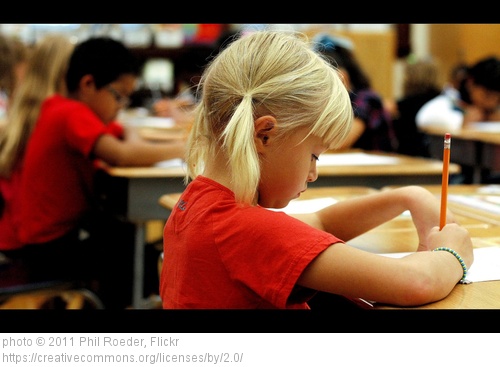When kids are overexcited, in the middle of a temper tantrum, or having trouble with their homework parents often tell their kids to “relax and calm down.” When they are wiggling in their desks and having difficulty sitting still, teachers frequently say to their students “just focus and pay attention.” Or when children are too hyped up at the end of the day and just can’t fall asleep, exacerbated parents yell to their kids, “just lie still and go to sleep.”
Parents and teachers are not wrong for wanting these desired behaviors in kids; they are just unskillful in their approach. It is easy to get frustrated with a child who just isn’t calming down, but the truth is, many kids have never actually been taught the skills in how to calm down.
Dr. Daniel Siegel, a neuroscientist and director of the mindfulness programs at UCLA has said, “It doesn’t matter what you are teaching kids if they don’t know how to pay attention.” Many assume that it is a natural rite of passage growing up to learn how to focus attention, regulate thoughts and emotions, and produce desirable behaviors, but the truth is, these skills need to be taught to kids just as they are taught walk, read or ride a bike.
There are many different organizations, such as Mission Be, that are making it their mission to provide kids with the tools to slow down, find their breath, and connect with their bodies thus teaching them how to calm down. By going into schools, as well as offering programs for parents, and teaching lessons in mindfulness, programs such as these provide the ultimate in social and emotional learning by bringing children and families the opportunity to develop lifelong skills that will benefit them in everything they do.
Mindfulness, an ancient wisdom contemplative practice, has found its way into many facets of our modern society, and is scientifically recognized as a valuable tool for increasing executive functioning, emotional regulation and an overall sense of well-being. Cultivating a mindfulness practice allows one to live their life with greater awareness, attention and intention; it is about being in the present moment, rather than ruminating on the past or having anxiety about the future, as well as developing greater gratitude and compassion. Mindfulness utilizes the breath as the anchor to the here and now, helping to get out of the stories in your head and into the experiential feeling in the body, thus bridging the heart and mind in congruence.
We do not live in a culture that fosters slowing down; the pace is always fast, we’re on to the next task before completing the current one, and we generally are on autopilot as we float through our day. The problem with this unconscious lifestyle is that without increasing awareness of the present moment, we are unable to be active participants in our lives and live largely disconnected from ourselves and others. Everyone, including children, has the capacity to learn greater presence, how to being still and generate greater awareness of what is going on inside of them and what is going on around them.
Mindfulness is the easiest thing to do, just the hardest thing to remember to do. It’s always a great reminder to take a minute and just breathe. As parents and teachers role model this kids will get these skills reinforced in how to live a more peaceful, conscious and balanced life.
Posted On 5/7/14
Written by Joree Rosenblatt
 Joree Rosenblatt has a Master’s in Counseling Psychology and is a mindfulness educator in the Bay Area. In addition to working at a K-8 private school teaching mindfulness to students, she teaches her original curriculum to adults, and onsite in corporations, in the Fundamentals of Mindfulness and Mindful Parenting. Joree’s true passion is raising her two daughters, mindfully of course…well, most of the time! Even though she already is a rock star mom, Joree practices mindfulness every day, and when all else fails, she remembers to take a moment and just breathe.
Joree Rosenblatt has a Master’s in Counseling Psychology and is a mindfulness educator in the Bay Area. In addition to working at a K-8 private school teaching mindfulness to students, she teaches her original curriculum to adults, and onsite in corporations, in the Fundamentals of Mindfulness and Mindful Parenting. Joree’s true passion is raising her two daughters, mindfully of course…well, most of the time! Even though she already is a rock star mom, Joree practices mindfulness every day, and when all else fails, she remembers to take a moment and just breathe.












Leave A Comment
You must be logged in to post a comment.